Med Surg Post Assignment PDF

| Title | Med Surg Post Assignment |
|---|---|
| Course | Professional Career Development Seminar |
| Institution | Florida Agricultural and Mechanical University |
| Pages | 2 |
| File Size | 72.2 KB |
| File Type | |
| Total Downloads | 40 |
| Total Views | 141 |
Summary
Download Med Surg Post Assignment PDF
Description
A nurse has just received report on four clients. How can the nurse use the prioritization principle “Acute over Chronic” to help decide which client to assess first? Provide an example. Acute over chronic refers to the case in which a patient experiencing an acute change in their health will receive prioritization over a patient who has a chronic condition. A nurse should prioritize a patient with a urine output of 25 mL/hr over the patient with a stage 4 pressure ulcer. A nurse finds a client on the floor actively having a seizure. What should the nurse do to keep the client safe? The nurse should make sure that there are no objects around the patient that can result in injury, and also remember to turn the client to the side and make sure their airway is clear. The nurse should also make sure to loosen clients’ clothing if it appears to be too tight, they should not put anything inside the patient’s mouth (no padded tongue blades) or restrain the patient. A nurse is caring for a client who has experienced a mild traumatic brain injury. Describe the manifestations of increased intracranial pressure the nurse should be alert for. The nurse should be alert for any reports of headache or blurred vision by the patient. The nurse should also be alert for any changes in level of conciousness, changes in behavior, and if the patient vomits. The nurse must most importantly be able to recognize Cushing’s triad: hypertension, bradycardia, and abnormal respirations. The nurse is caring for a client post-craniotomy to treat a brain tumor. What postoperative nursing actions should the nurse initiate? The nurse should focus on the client’s response to coming off anesthesia. The nurse should monitor vital signs and perform a physical assessment of the client. The client’s neurological status should be assessed. Their pain level should be assessed, and the nurse may administer pain medications, as ordered. The client’s urine output must be monitored, as well as labs such as electrolyte levels. A nurse is caring for a client who has had a below the knee amputation of his right leg due to traumatic injury. Discuss 3 potential postoperative complications that can develop and the nursing interventions to address the complication. 1. A potential complication is stump edema which can result from trauma during the surgery. The nurse could make sure there is an order for compression socks, as well as helping the patient exercise the leg. 2. A second complication is the client may experience residual limb pain or phantom limb pain. The nurse should assess the client’s affected limb and assess pain level and administer pian medications, as ordered. 3. The client’s residual wound site may show signs of infection. The nurse should initiate wound culture per doctor’s orders. Wound care should be performed as well as appropriate administration of antibiotics, if infection is confirmed.
A client with Parkinson’s disease has been prescribed selegiline. What is the medication classification of selegiline and what dietary instructions should the nurse provide to a client who is taking medication? Selegiline is a monoamine oxidase type B inhibitor. Advise clients to avoid tyramine-containing foods such as aged cheese. Caffeine-containing beverages, cured or processed meats, alcoholic beverages, grapefruit, etc. A nurse is caring for a client with rheumatoid arthritis who is prescribed a non-steroidal anti-inflammatory drug (NSAID) for the treatment of joint pain. Provide 3 points in client teaching the nurse should provide regarding this medication therapy. 1. The most common side effects are heartburn, nausea, stomach aches. You may take this medication with food to minimize GI upset. 2. NSAIDs must be taken exactly as prescribed by your physician. 3. This medication therapy may cause kidney damage and lead to high blood pressure. A nurse is caring for a client experiencing metabolic acidosis. What are three causes of metabolic acidosis. 1. Hypoglycemia 2. Drinking too much alcohol 3. A lack of oxygen for a prolonged time A nurse is caring for a client with colorectal cancer who is scheduled for a colectomy. What pre and postoperative teaching should be provided. Inform client to do a bowel prep about 2 days before procedure, and that they must remain NPO 12 hours before the procedure. They should reduce intake of fiber and eat light a couple days prior to procedure. Do not take any aspirin about a week prior to surgery. Inform client that they will be in the hospital for about 4-7 says after surgery, and that they will be prescribed pain medication to alleviate post-operative pain. You can be discharged once it is assessed that you’re eating adequately you can tolerate PO meds, and having bowel movements. It’s important to wash your hand with soap and water before touching the bandage. Report any sings of infection (redness, incision, swelling, etc.). A nurse is caring for a client following a hypophysectomy. What postoperative nursing actions should be taken for this client? Assess vital sings and perform focused assessment. Assess neurological status every hour and assess pain level. Monitor for postnasal drip which could indicate CSF leaking. Assess any drainage for Halo sign and glucose. Monitor electrolyte levels and fluid status. Monitor kidney function. Perform proper hand hygiene throughout care. Advise patient to avoid coughing and administer stool softener, as prescribed....
Similar Free PDFs

Med Surg Post Assignment
- 2 Pages
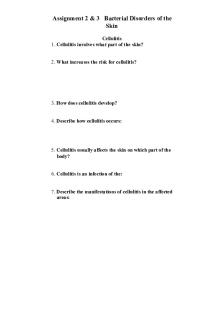
Med SURG; assignment 2
- 9 Pages
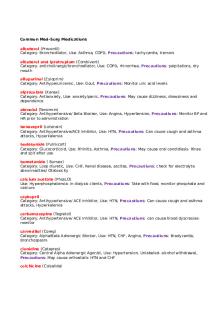
Common Med Surg Meds
- 7 Pages

Med surg dorris bowman
- 4 Pages
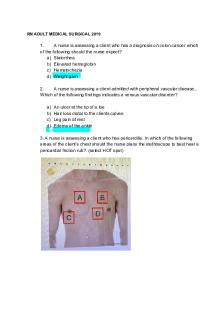
Med surg - notes
- 28 Pages
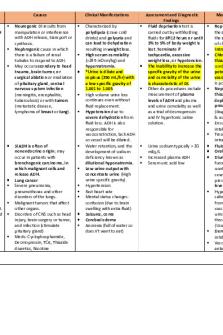
Med-Surg Endocrine
- 11 Pages
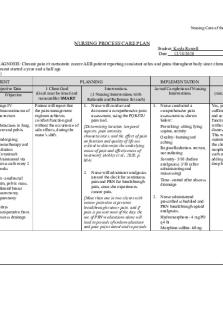
Med Surg- Care Plan
- 6 Pages
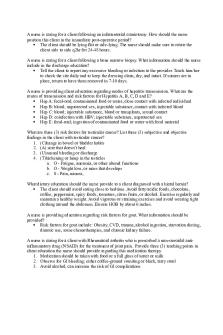
Med-Surg Capstone remediation
- 4 Pages

Med Surg Exam 3
- 19 Pages
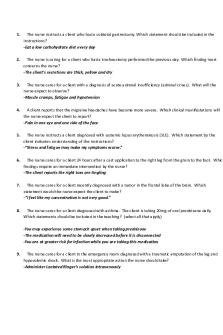
Kaplan med surg 2
- 8 Pages

Med surg 1
- 33 Pages

med surg review questions
- 7 Pages
Popular Institutions
- Tinajero National High School - Annex
- Politeknik Caltex Riau
- Yokohama City University
- SGT University
- University of Al-Qadisiyah
- Divine Word College of Vigan
- Techniek College Rotterdam
- Universidade de Santiago
- Universiti Teknologi MARA Cawangan Johor Kampus Pasir Gudang
- Poltekkes Kemenkes Yogyakarta
- Baguio City National High School
- Colegio san marcos
- preparatoria uno
- Centro de Bachillerato Tecnológico Industrial y de Servicios No. 107
- Dalian Maritime University
- Quang Trung Secondary School
- Colegio Tecnológico en Informática
- Corporación Regional de Educación Superior
- Grupo CEDVA
- Dar Al Uloom University
- Centro de Estudios Preuniversitarios de la Universidad Nacional de Ingeniería
- 上智大学
- Aakash International School, Nuna Majara
- San Felipe Neri Catholic School
- Kang Chiao International School - New Taipei City
- Misamis Occidental National High School
- Institución Educativa Escuela Normal Juan Ladrilleros
- Kolehiyo ng Pantukan
- Batanes State College
- Instituto Continental
- Sekolah Menengah Kejuruan Kesehatan Kaltara (Tarakan)
- Colegio de La Inmaculada Concepcion - Cebu



